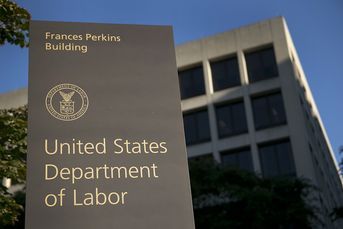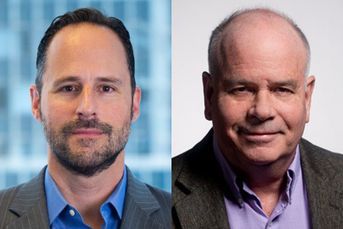Here’s how COVID-19 could test the value of ESOPs

Employee ownership plans correlate with higher income and better retention, and companies with such plans are likely doing better than others right now, according to an ESOP group
Workers whose companies provide employee stock ownership plans, or ESOPs, are likely faring better overall than those without them, according to an organization that tracks such plans.
That was the case following the 2008 recession, when companies with ESOPs had lower turnover rates than others, said Loren Rodgers, executive director of the National Center for Employee Ownership (NCEO).
The plans are not becoming more common, but there are currently two bills in Congress that could expand them.
“My sense is that our members are maintaining employment more than the average company,” Rodgers said. “Many of them seem to be following the same pattern they did 12 years ago and finding other ways to reduce expenses.”
A benefit of employee ownership is that workers have more of a stake in the companies that employ them, and companies become more financially sound and better run than they would without those plans.
Further, ESOPs have been shown to make companies better for people of color, single parents and for people without college educations, Rodgers said.
“Once a company is employee-owned … even if it wasn’t their intent, they make different decisions,” he said. “Employee owners are just better off.”
That thinking has led some states to start grant programs to encourage employers to start ESOPs. There is also a bill currently before Congress that would start a national program, including temporary grants that would help fund contributions within those plans. That legislation, sponsored by Sen. Ron Johnson (R-Wis.) and Sen. Tammy Baldwin (D-Wis.), would grant businesses up to $20,000 per employee, with funds coming at least in part from the Coronavirus Economic Stabilization Act.
Companies could also receive $50,000 to defray costs associated with starting an ESOP, according to text of the bill. The grant program would expire at the end of September 2022.
Behind that bill is the idea that ESOPs should be linked with raising capital for businesses, which was the vision that economist Louis Kelso had when he created the plan type, Rodgers said.
“I would be really economically stimulative by capital assets, not just by shuffling who owns the company,” he said.
Another bill, sponsored by Rep. Alexandria Ocasio-Cortez (D-N.Y.), would require public companies that are receiving federal COVID-19 aid to give their employees equity. Those companies would make annual equity payments to workers until they repay the full amount of their federal aid.
“We’ve got just incredible polarization going on. We’d be able to better deal with COVID-19 if we had a better distribution of wealth in this country,” Rodgers said. The ESOP model “puts wealth in the hands of people who create it.”
WORKERS BENEFIT FROM ESOPs
Research of Bureau of Labor Statistics data by NCEO research director Nancy Wiefek found that workers with ESOPs are financially better off than those without.
Among workers age 28 to 34, those with ESOPs in 2017 had 92% higher median household wealth, 33% higher income from wages and job tenure 53% longer, Wiefek wrote.
“The striking relationships between employee ownership and improved economic outcomes for workers persist over time and when controlling for demographic factors,” the paper stated.
ESOP companies are also more likely to provide generous benefits, including parental leave, tuition reimbursement, flexible work arrangements and other retirement plans, according to that report. ESOPs are generally considered a supplement to other retirement savings plans, like 401(k)s, not as a replacement for them.
People of color in ESOPs have median household wealth 79% than those without such plans, as well as wages that are 30% higher and job tenure 36% longer, according to NCEO.
There were more than 6,600 ESOPs in the U.S. at the end of 2016, representing more than 14 million participants, according to a 2019 report from NCEO. In 2010, there were more than 7,100 such plans, with a total of about 13.5 million employee owners.
The industries most likely to provide ESOPs are manufacturing, white-collar professional services, financial services and construction.
“Health care is a small portion of the number of ESOPs, but it’s really increasing rapidly,” Rodgers said. “Turnover is really important to them.”
LAWSUIT TARGET
Like 401(k) sponsors, companies with ESOPs have been targeted for lawsuits in recent years.
Between 1990 and June 2019, there were nearly 400 lawsuits involving ESOPs, with 332 filed against private companies and 60 naming publicly traded companies, according to NCEO research.
“There’s a mixed package there,” Rodgers said. “The Department of Labor is one of the sources of a fair number of the lawsuits, and they’ve been doing less and less of that.”
The DOL cases have centered on valuation, with the goal of making sure that the original valuations of shares are fair to employees, he said. The history of cases have clarified the regulator’s thinking, making employers much more aware of how to comply, he noted.
In April, the regulator reached a settlement with Wilmington Trust over losses incurred by ESOP participants when the company allegedly allowed plans to pay more than fair market value for shares of stock. Wilmington did not admit or deny wrongdoing, and it agreed to pay $80 million to 21 different ESOPs, the DOL stated.
Last month, convenience-store chain Wawa agreed to settle a lawsuit over its ESOP for $21.6 million, which followed a prior settlement of $25 million in a different case.
Plaintiffs in the recent case alleged that the company forced some workers out of the plan and undervalued share values when compensating them.
Learn more about reprints and licensing for this article.








